The term ‘Hindutva’ was first coined, used, and explained by the Bengali scholar Chandranath Basu in his essay ‘Hindutva or the Authentic History of the Hindus’ (Hindutva ba Hindu Prakrata Itihas) in 1892. Chandranath’s literary talent was first spotted by Bankim Chandra Chatterjee in his review of Krishnakanter Will (Bengali novel by Bankim Chandra) and it was at Chatterjee’s behest, that Chandranath took to writing in Bengali and got associated with Bangadarshan, a literary magazine that Bankim Chandra founded in 1872. In 1876, a Bangadarshan published a series of articles in Bengali on Chhatrapati Shivaji.
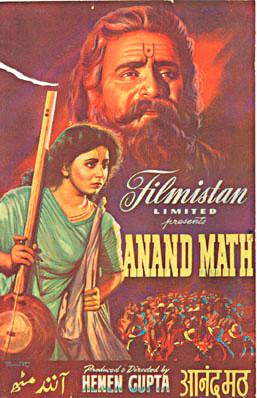
Anandamath (The Abbey of Bliss, 1882) is a political novel by Bankim Chandra which depicts a Sannyasi (Hindu ascetic) army fighting a British force. The novel first appeared in serial form in Bangadarshan. The book calls for the rise of Indian nationalism. The novel was also the source of the song Vande Mataram which, set to music by Rabindranath Tagore, was taken up by many Indian nationalists and is now the National Song of India. The plot of the novel is loosely set on the Sannyasi Rebellion. He imagined untrained Sannyasi soldiers fighting and defeated the highly experienced British Army. Drawing from the Shakti tradition of Bengali Hindus, Bankim Chandra personified India as a Mother Goddess known as Bharat Mata, which gave the song a Hindu undertone.

Aurobindo Ghosh (later Sri Aurobindo), who was working under the Gaikwad Maharaja of the Princely state of Baroda became inspired by the story of Bankim’s novel Anandamath. Aurobindo frequently shared with his younger brother Barin his ideas of imparting martial and intellectual training to the youth of Bengal for the coming revolution; loosely like the sannyasis of Anandamath who stir a rebellion against the British. During his stay at Baroda, Aurobindo established contact with Lokmanya Tilak and other revolutionaries of Western India. It is also claimed that Baroda Maharaja helped him secretly.
In the year 1897, Jatindra Nath Banerjee, a native of Bengal, joined the Baroda army as a bodyguard of the Baroda Maharaja on the recommendation of Aurbindo. When Anushilan Samity was formed at Kolkata, Aurobindo sent a request to Jatindra Nath to join the organization. So Jatindra Nath left his job in Baroda to join Anushilan Samity. The Samiti was influenced by the writings of Bankim Chandra. The name of the organization, Anushilan, is derived from Bankim’s works espousing hard work and spartan life. A search of the Dacca Anushilan Samiti library in 1908 showed that Bankim’s Bhagavat Gita was the most widely read book in the library.
Margaret Elizabeth Noble also knowns as Sister Nivedita was an Irish teacher and famous disciple of Swami Vivekananda. She provided financial and logistical support and leveraged her contacts to get information from government agencies and forewarn independence activists. She exerted great influence on famous Tamil poet, Subrahmanya Bharati, who met her only briefly in 1906.
She influenced Bharathi to work for the freedom of women in the country, which he did all through his life . Nivedita designed the national flag of India with the thunderbolt as the emblem against a red background. Nivedita tried her utmost to inculcate the nationalist spirit in the minds of her students through all their daily activities. She introduced the singing of the song Vande Màtaram in her school as a prayer. Nivedita provided guarded support to Annie Besant and was very close to Aurobindo. She wrote a book titled ‘Cradle Tales of Hinduism’. It is a book about introduction to Hindu mythology; the stories come from the Mahabharata, the Ramayana and other Hindu sources and are presented as they were told in Indian nurseries.
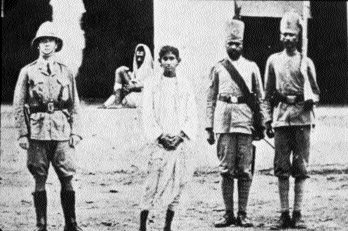
In 1902 and 1903, Sri Aurobindo and Sister Nivedita visited Midnapore. They held a series of public lectures and private sessions with the existing revolutionary groups for freedom. Khudiram Bose ,who attempted to assassinate a British judge, Magistrate Douglas Kingsford few years later , was an active participant in the discussions about the revolution.
In 1905, the colonial government, under the direction of Lord Curzon, initiated the partition of Bengal , the reorganization separated the largely Muslim eastern areas from the largely Hindu western areas. Muslims led by the Nawab Sallimullah of Dhaka supported the partition while Bengali Hindus opposed it.
The 1905 partition of Bengal stimulated radical nationalist sentiments in Bengal’s Bhadralok community, helping the Indian revolutionaries to acquire the support of educated, politically-conscious and disaffected members of local youth societies. Bhupendra Nath Datta brother of Swami Vivekananda and the editor of the newspaper Jugantar Patrika was arrested by British police in 1907 with the charge of sedition and was sentenced to one year’s imprisonment .
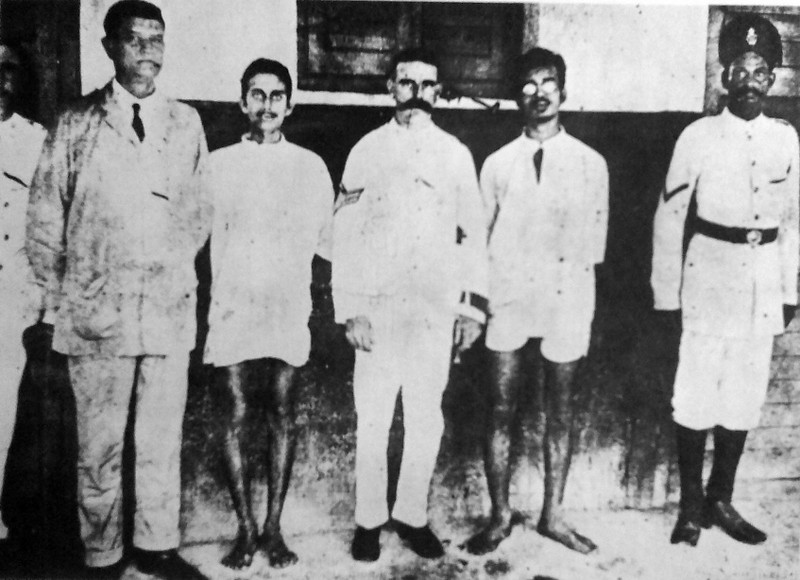
Bal Gangadhar Tilak used to run his two newspapers, Kesari, in Marathi and Mahratta in English from Kesari Wada, Narayan Peth, Pune. Kesari was founded on 4 January 1881. Tilak and Swami Vivekananda had great mutual respect and esteem for each other. They met accidentally while travelling by train in 1892 and Tilak had Vivekananda as a guest in his house.
A person who was present there(Basukaka), heard that it was agreed between Vivekananda and Tilak that Tilak would work towards nationalism in the “political” arena, while Vivekananda would work for nationalism in the “religious” arena. When Vivekananda died at a young age, Tilak expressed great sorrow and paid tributes to him in the Kesari.
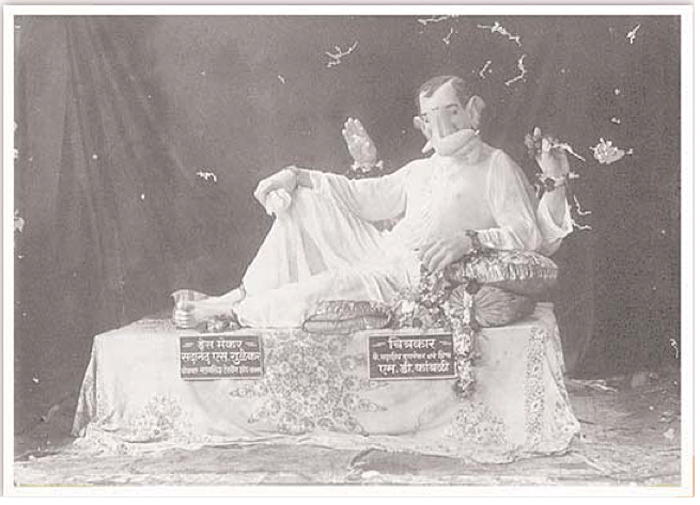
Tilak is known for introducing Hindu cultural and religious symbols as catalysts for strengthening nationalism. In 1894, Tilak transformed the household worshipping of Ganesha into a grand public event (Sarvajanik Ganeshotsav). The celebrations consisted of several days of processions, music, and food. They were organized by the means of subscriptions by neighborhood, caste, or occupation.
Students often would celebrate Hindu and national glory and address political issues; including patronage of Swadeshi goods. In 1895, Tilak founded the Shri Shivaji Fund Committee for the celebration of “Shiv Jayanti”, the birth anniversary of Shivaji, the founder of the Maratha Empire. The events like the Ganapati festival and Shiv Jayanti were used by Tilak to build a national spirit beyond the circle of the educated elite in opposition to colonial rule. Aurobindo wrote an imaginary conversation between Jai Singh and Shivaji (on early 20th century India) titled ‘Conversations of the Dead’.
Following the Partition of Bengal, Tilak encouraged the Swadeshi movement and the Boycott movement. Tilak opposed the moderate views of Gopal Krishna Gokhale, and was supported by fellow Indian nationalists Bipin Chandra Pal in Bengal and Lala Lajpat Rai in Punjab. They were referred to as the “Lal-Bal-Pal triumvirate”. Aurobindo and Tilak were seen together in the 1907 Surat session of Congress in which the Split took place. Thus , Maharashtra , Punjab and Bengal shared a common bond of nationalism in those period.
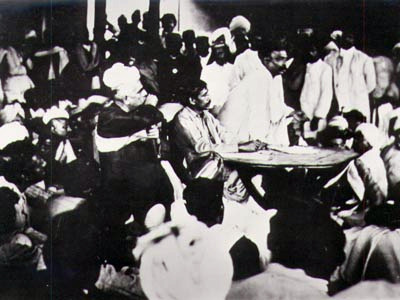
In 1902, the first Shivaji Festival was held in Bengal. A contemporary newspaper – The Voice of India – says about the event – ‘Those who have eyes to see need no one tell them that a new sense of nationality, a larger ideal of patriotism is springing up among the people.’ In 1906, Lokmanya Tilak himself came down to Calcutta to preside over that year’s Shivaji Utsav. Bipin Chandra Pal was also present in the patriotic gathering as was Ashwani Kumar Dutta.
The event was a resounding success drawing thousands of people. The Times of India reported that enthusiasm for listening to Tilak speak about Shivaji rivaled that in Pune or Bombay! Bipin Chandra Pal also spoke that day, where he celebrated Shivaji as a great inspiration for Hindus: “Shivaji was a Hindu. He symbolized the religio-political ideal of the Hindu people. In honoring Shivaji we honor that Hindu ideal.” Bipin Chandra Pal also started a festival to celebrate Raja Pratipaditya of Jessore. Sakharam Ganesh Deuskar ,a Maharashtrian settled in Bengal played a very important role in the cultural exchange between Maharashtra and Bengal.
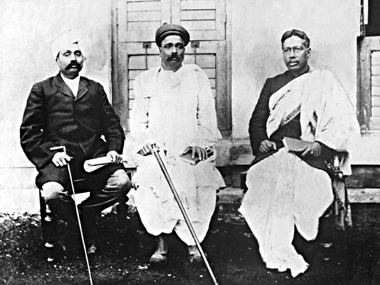
Lala Lajpat Rai was influenced by the Hindu reformist movement of Swami Dayanand Saraswati, he became a member of existing Arya Samaj Lahore . Bhagat Singh’s grandfather followed Arya Samaj, which had a considerable influence on Bhagat Singh. In 1886, Lalaji helped Mahatma Hansraj establish the nationalistic Dayananda Anglo-Vedic School, Lahore. To shape the political policy of India to gain independence, he also practiced journalism and was a regular contributor to several newspapers including The Tribune. Lalaji wrote a biography of Shivaji in 1896, in Urdu, published in Lahore.

Shyamji Krishna Varma who founded the Indian Home Rule Society, India House and The Indian Sociologist in London was the disciple of Swami Dayananda Saraswati .It was upon Dayanand’s inspiration, he set up a base in England at India House where were produced many revolutionaries like Madam Cama, Veer Savarkar, Lala Hardyal and Madan Lal Dhingra. The building rapidly became a hub for political activism, one of the most prominent for overseas revolutionary Indian nationalism. In 1909, a member of India House, Madan Lal Dhingra, assassinated Sir W.H. Curzon Wyllie, political aide-de-camp to the Secretary of State for India.


